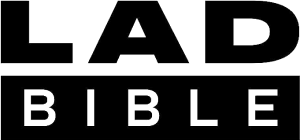ITAM Software
Supercharge Your IT Assets, the Easy Way
Drowning in misplaced IT assets, compliance headaches, and shadow IT? Navigate to clarity with an intuitive IT Asset Management solution.
Experience crisp visibility, effortless control, and unshakable security – all while freeing up your budget with optimized software licenses.
The best part? It’s easy.

We're Trusted by the Best






With AssetSonar, Our Customers Have Achieved
Powerful ITAM, Built for Your Needs
Imagine a world where you have a complete & effortless picture of your entire IT ecosystem, from critical servers and expensive software down to that last forgotten headset. Reap the full benefits of your IT investments with an intuitive ITAM solution that empowers you to optimize IT spending, improve operational efficiency, and minimize risk.
With our powerful IT asset management solution, IT managers can map out the entire IT asset landscape, optimize ITAM lifecycles for peak performance, stay audit-ready, and fine-tune SaaS spending down to the last dollar – all with a few clicks.
IT Asset Excellence, Redefined

Misplaced IT Assets
"I need to track my devices down."
Complete Visibility
Efficiently track all your hardware with an ITAM agent, powerful network discovery & MDM integrations for both Windows and Mac devices.

Low ROI on IT Investment
"I need to improve IT asset utilization by managing checkouts & provisioning."
Do More With Your IT Budget
Keep every network asset on your radar, know its users & usage, and ensure every asset adds value with a robust cloud ITAM solution.

ITSM Chaos
"I have limited visibility into asset dependencies, making it hard to manage incidents."
Improve Incident Resolution
Gain full visibility into asset dependencies, improving incident resolution and enabling proactive problem management with a complete IT asset tracking software.

Compliance Headaches
"I face risks due to untracked vulnerabilities in hardware and software."
Stay Compliant Always
Provide real-time monitoring and alerts for vulnerabilities, securing assets and preventing costly security breaches.

Wasted SaaS Spend
"I have uncontrolled software sprawl causing overspending on licenses & lack visibility into the full software stack across departments."
Software License Optimization
Centralize software license data to optimize your software stack. Reclaim unused licenses & pay only for what you need through powerful SaaS management.

Shadow IT Risks
"I struggle to manage shadow IT, leading to compliance and security risks."
Shadow IT Control & Compliance
Detect unauthorized software usage, manage shadow IT, and ensure security and compliance across the organization.
AssetSonar Solutions at a Glance
Hardware Asset Management
Software Asset Management
IT Service Management (ITSM)
Hardware Asset Management
Keep Every IT Asset on Your Radar, At All Times
- Detect and track all hardware assets through powerful Network Discovery, a thorough discovery agent & multiple MDM integrations to keep everything on your radar – or should we say, sonar.
- Get your money’s worth from your assets with complete IT asset inventory management from procurement to disposal.
- Efficiently procure the right hardware, at the right time, so you spend less and do more with your network assets.
- Secure your devices by tailoring permissions, performing easy audits & tracking custody so assets don’t retire early.

Software Asset Management
Clean Up Your Tech Stack, Minimize Waste & Maximize Value
- Conveniently map software licenses, versions & installations on-premise or on-the-cloud from a single source of truth.
- Optimize software spending by managing renewals & accessing pre-built reports like Technology Spend per User or building your own from scratch.
- Neutralize threats early on by blacklisting malicious software, tracking browser data & keeping your digital arsenal secured through patch management.

IT Service Management (ITSM)
Streamline IT Operations for Peak Performance
- Boost employee satisfaction by providing faster and more efficient support with powerful Zendesk & Jira integrations.
- Automate customizable workflows to reduce service disruptions & free-up admin bandwidth.
- Schedule onboarding & offboarding to provision IT assets with minimal to no friction & manage maintenance like a pro.
- Gain deeper insights into your IT infrastructure with a robust CMDB. Manage dependencies between Configuration Items to resolve tickets at blazing speed.

Manage Every IT Asset, On the Go!
Effortlessly track, maintain & provision your IT assets seamlessly, whether you’re in the office or on the move. Empower system administrators with powerful features in an easy to use mobile app that streamlines daily tasks and enables full visibility over the entire IT asset ecosystem, anytime, anywhere.
- Manage reservations, approve requests, and check out devices directly from your phone.
- Review work orders and pending tasks, ensuring uninterrupted productivity.
- Access any and all asset data – asset name, location, status, and more – right at your fingertips.
- Stay compliant with a bird’s-eye view of software licenses in the palm of your hand to spot vulnerabilities from a mile away.
- Scan assets with the built-in camera scanner, update records in real-time, and add new inventory.
- Conduct audits effortlessly across different locations and teams using just your mobile device.

Integrations: Unlock the Power of Synergy

Customer Testimonials
- AssetSonar is helping us track all of our physical IT assets, all of our software and software licenses. Our finance team will also be using it to track depreciation, and we will have links from AssetSonar into our procurement system.

- So easy a caveman could use it. I like how easy it is to request items and saving groups of items for repeat orders. [We dislike] that we didn't use this program sooner. Before we just used excel.

- I am impressed with the attitude, service, quality of pricing, and outstanding employees AssetSonar offers. Asset Sonar seemed to fit out company needs, and was willing to work towards a better Asset Management & Software system.

- Our experience with AssetSonar has been excellent. The software integrates seamlessly with JAMF Pro and Zendesk, enabling smooth workflows across our IT and support systems. The ability to create custom asset tags has enhanced our asset tracking, allowing us to tailor the tool to our organization’s needs. Additionally, AssetSonar has been invaluable in providing HR with visibility into the status of MacBooks for both new hires and offboarded staff, streamlining our onboarding and offboarding processes

Case Studies

Elizabeth Koering
Lead Technician
Tricia Williams
System Administrator
Karien Greff
Managing Director
Kent Lyle
IT Manager
Tim Stern
Assistant Administrator








